Thinking about making the leap into entrepreneurship?
It’s a thrilling new experience, one that’s extremely rewarding and sure to keep you on your toes at all times.
We’re not gonna lie: frustration is a natural part of entrepreneurship. But once you achieve success, you’ll realize it was all worth it.
Before you start, whether you want to just test the waters with a little side hustle or go full-on into it, it’d do you best to get a feel of entrepreneurship around the world.
That’s what we’re here to do today. We’ll cover issues like:
- What are the joys being an entrepreneur brings?
- How many entrepreneurs are there in the world?
If you’re looking for entrepreneurship stats and facts about entrepreneurs, read on. In this article, we’ll cover ten entrepreneur statistics you need to know in 2023. Let’s get straight to them.
Post Contents
- 1. How Many Entrepreneurs Are There in the World?
- 2. How Many New Entrepreneurs Are There in the US?
- 3. How Many Female Entrepreneurs Are There Worldwide?
- 4. What Percentage of Entrepreneurs Are Turning a Profit?
- 5. Black Entrepreneurs Statistics
- 6. Minority Entrepreneurs
- 7. Entrepreneurship Stats: Motivation To Start
- 8. Percentage of Entrepreneurs in America
- 9. How Many Millionaires Are Self-Made?
- 10. Family-Based Entrepreneurship
- Conclusion
- Summary: Entrepreneur Statistics
- Want to Learn More?



1. How Many Entrepreneurs Are There in the World?
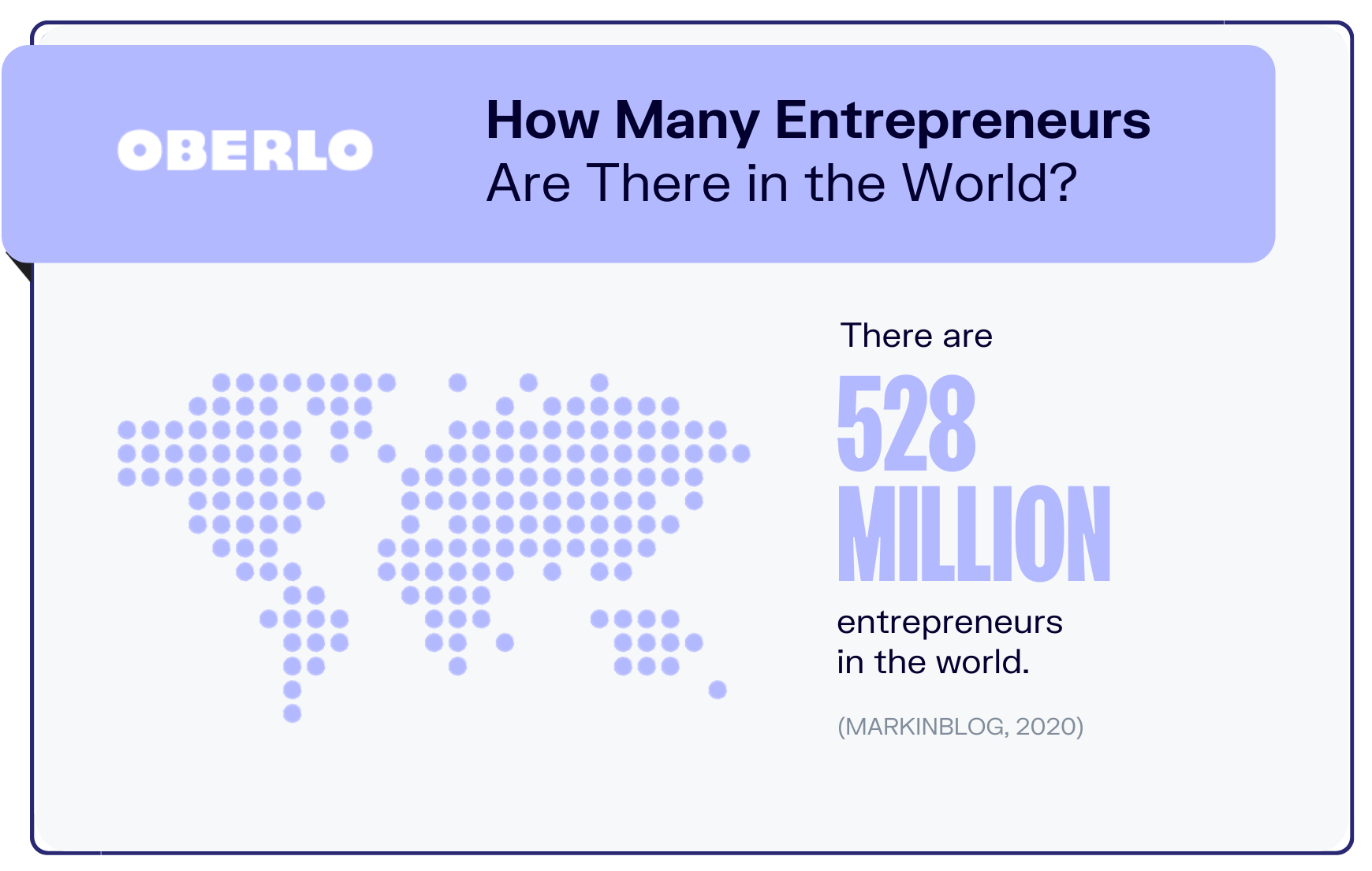
To kick things off, let’s first understand how popular being an entrepreneur is.
→ Click Here to Launch Your Online Business with Shopify
There are 582 million entrepreneurs in the world (MARKINBLOG, 2020). Though they are spread across the globe, there are a few places that entrepreneurs—both existing and aspiring ones—gravitate towards. This is mostly because of the good support and infrastructure that these places provide.
The World Bank’s Ease of Doing Business index ranks economies according to how conducive they are for new businesses. Of the 189 countries and territories analyzed in its 2019 report, New Zealand came out on top. This is followed by Singapore, Hong Kong, Denmark, and South Korea.
The United States is sixth on the list and ranks particularly high in terms of ease of resolving insolvency (second) and obtaining credit (fourth).
2. How Many New Entrepreneurs Are There in the US?
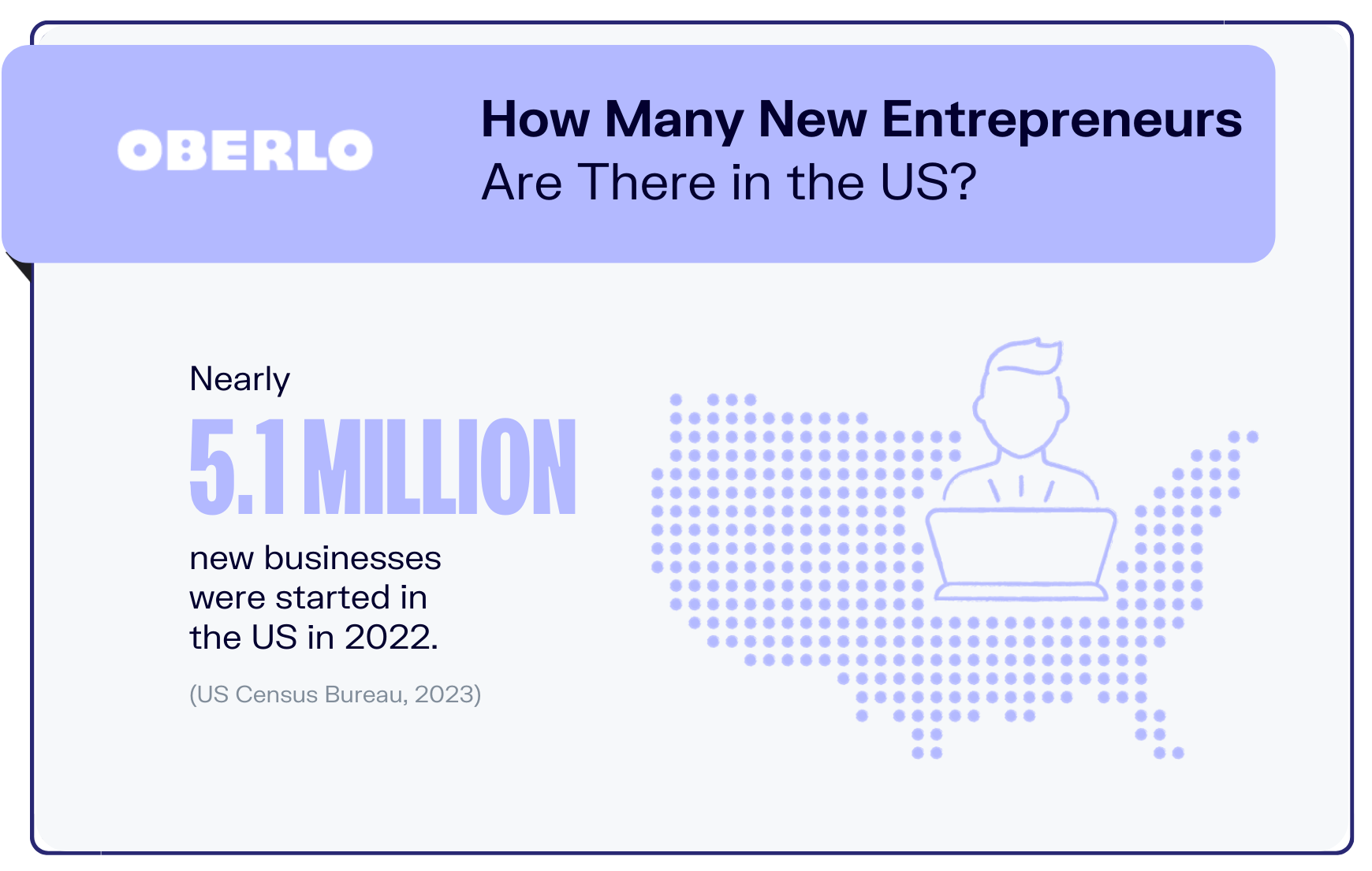
Given how easy it is to start a new business in the US, it should come as no surprise that there are millions of entrepreneurs launching new ventures there every single year.
According to the latest entrepreneurship stats, nearly 5.1 million new businesses were registered in 2022 (US Census Bureau, 2023). This marked the second year running that the number of new businesses exceeded the 5 million mark, despite it being a 6.2 percent decrease from the previous year. In 2021, the number of new businesses established hit a record high of 5.4 million.
The number of new entrepreneurs in the US had been increasing annually since 2004. But during the global financial crisis, the number fell. In 2008, the number of new businesses registered decreased by five percent compared to the previous year. It dropped another 3.7 percent in 2009, before recovering in 2010.
From then until 2021, entrepreneurship had been on a steady increase, with more and more new businesses being launched every single year.
3. How Many Female Entrepreneurs Are There Worldwide?
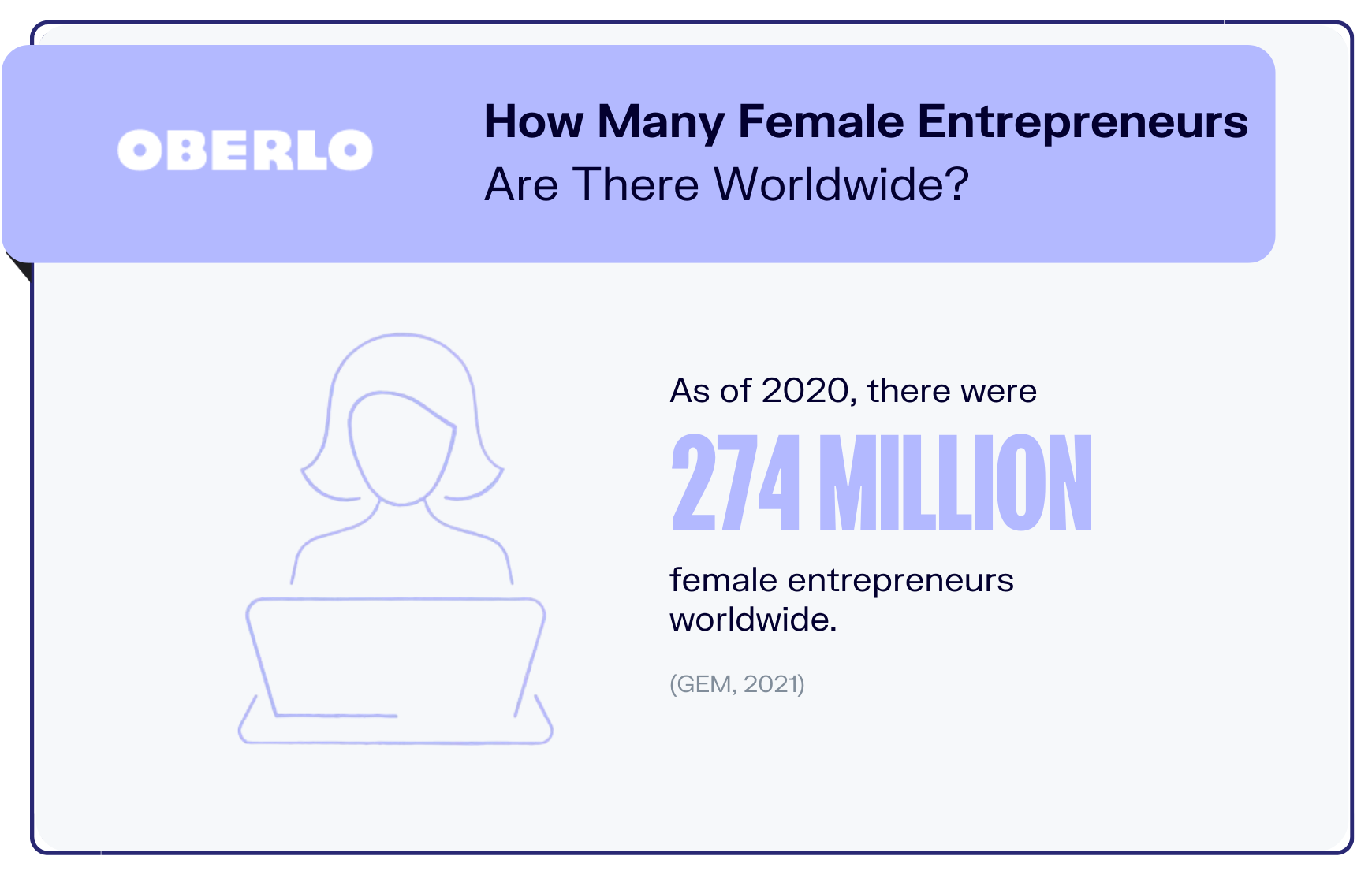
Now that we’ve established the total number of entrepreneurs in the world and in the US, let’s look at things from another angle—the number of female entrepreneurs worldwide.
As of 2020, there were approximately 274 million women worldwide engaged in entrepreneurial activities (GEM, 2021).
With 51.1 percent of the female adult population involved in entrepreneurial activity, Angola has the highest female entrepreneurship rate in the world. This is followed by Panama with 29.1 percent and then Saudi Arabia with 17.7 percent.
Of the 274 million female entrepreneurs worldwide, the majority of them cited a lack of jobs as their main reason to start a business. This is especially true for women located in Latin America, the Caribbean, Europe, North America, the Middle East, and Africa. In Central and East Asia, however, most female entrepreneurs said they decided to start a business to grow their wealth.
4. What Percentage of Entrepreneurs Are Turning a Profit?
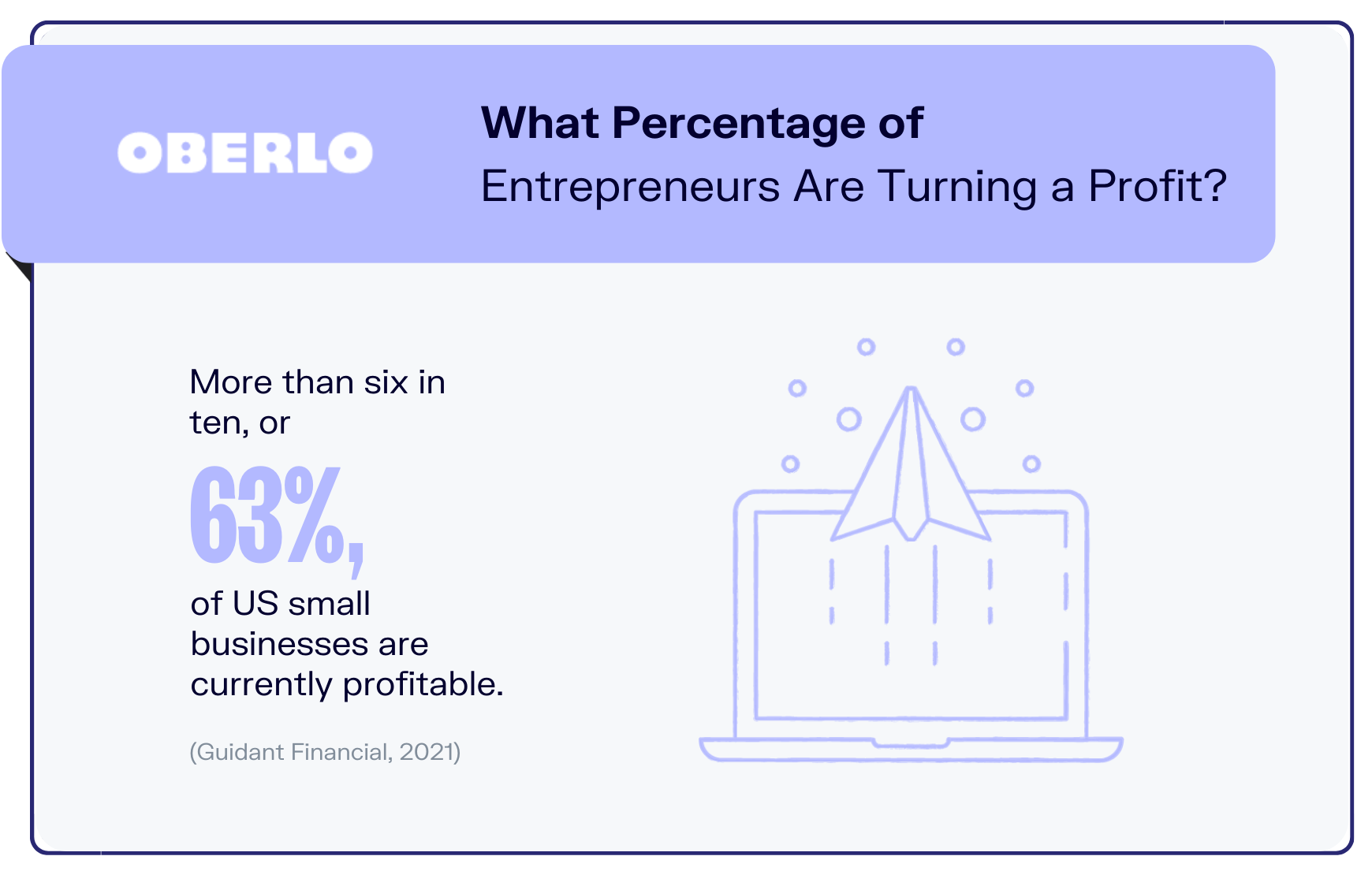
Being an entrepreneur and setting up a business is one thing. Sustaining it and making sure your numbers don’t fall in the red, however, is another.
The latest entrepreneurial statistics show that more than six in ten (63 percent) small businesses in 2020 were reported to be profitable (Guidant Financial, 2021). This is actually a 15 percentage point drop from the previous year, which experts attribute to the impact of the coronavirus pandemic.
In spite of this, sentiments remained relatively high. As many as 78 percent of small business owners expected to survive through the pandemic, and just four percent thought their business will fail.
The sector your entrepreneurial venture is in can also affect your gains. Recent figures show that the industry with the highest net profit margin is accounting, with a margin of 18.4 percent (of total revenue). This is followed by lessors of real estate at 17.9 percent and legal services at 17.4 percent.
5. Black Entrepreneurs Statistics
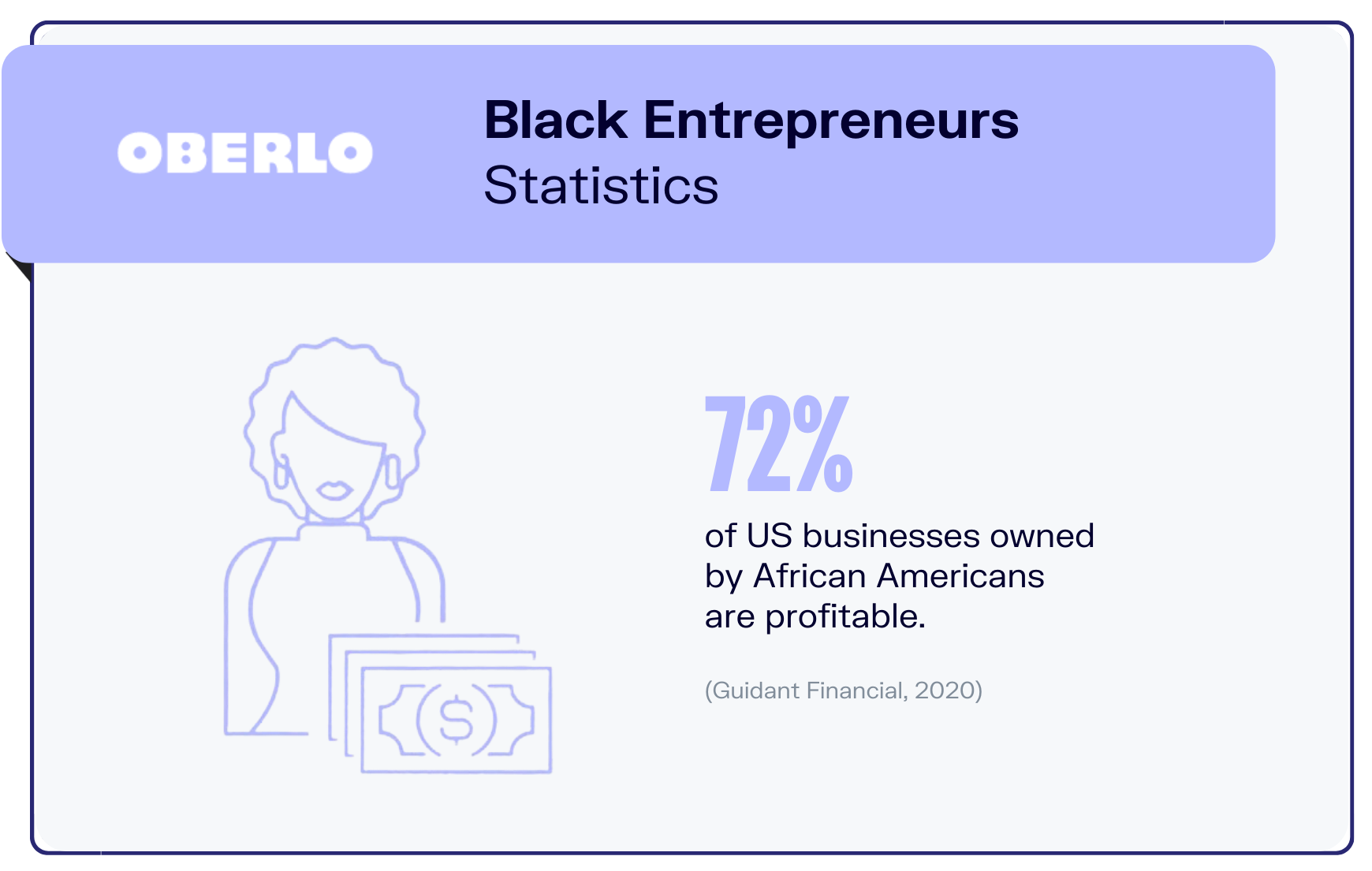
What about minority entrepreneurs? More specifically, African American entrepreneurs? How are they performing?
According to Guidant Financial, a US firm that finances small businesses, the majority of black entrepreneurs there (20 percent) provide business services. This is followed by health, beauty, and fitness services, food and restaurant, retail, and construction and contracting services.
Cash flow, one of the most common problems in business, is the top challenge African American entrepreneurs are currently facing. Marketing and advertising and inadequate time management are also some of their main concerns.
With regards to their financial health, the proportion of businesses owned by African Americans that are profitable is slightly lower than the national figure—72 percent instead of 78 percent (Guidant Financial, 2020).
6. Minority Entrepreneurs
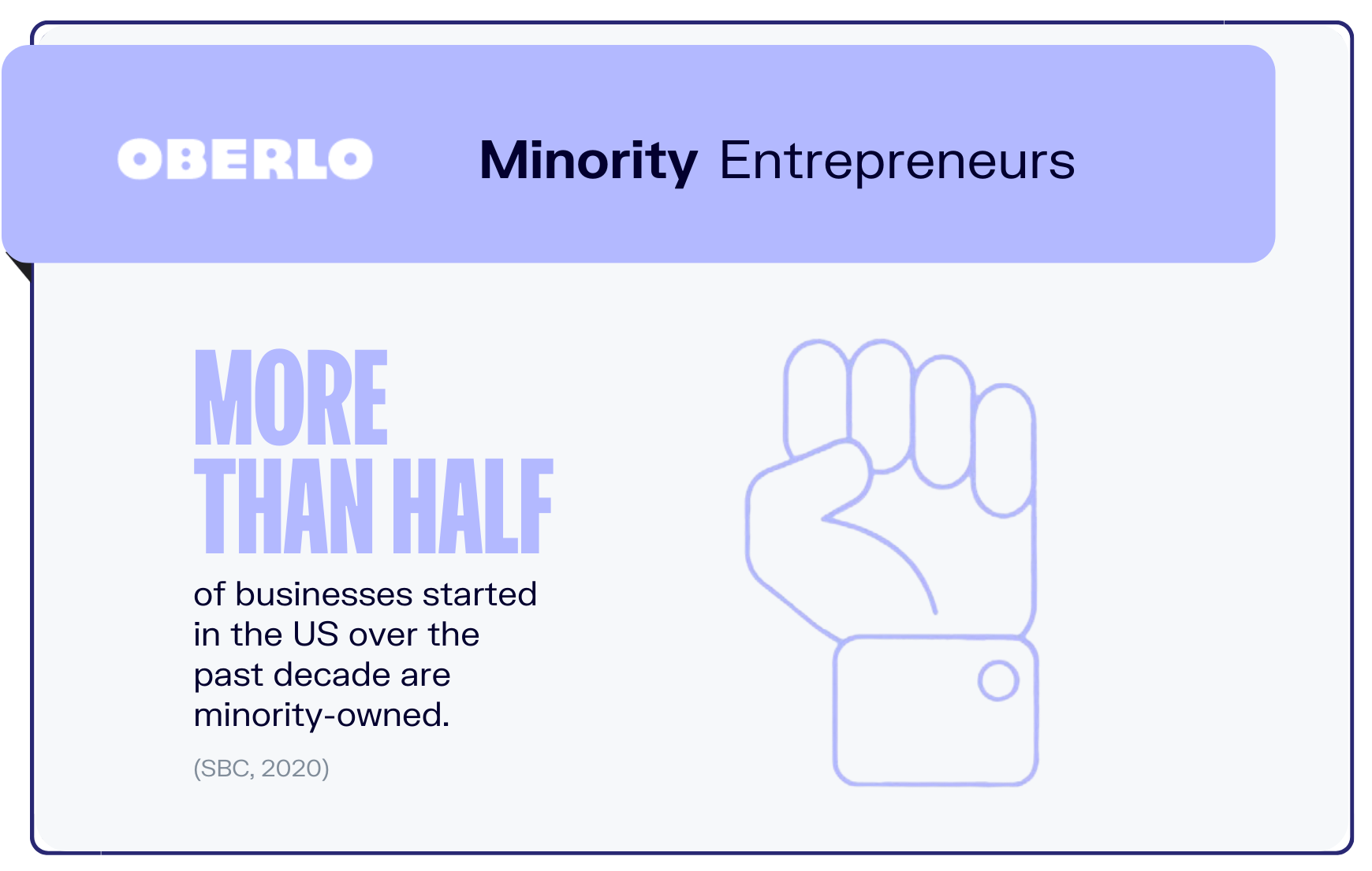
Entrepreneurship has become increasingly popular in the US over the past few years. But how many of these businesses, both new and existing, are minority-owned?
The latest entrepreneurial statistics show that in the past decade, as many as two million new businesses were launched in the United States. Of them, minority-owned companies make up more than half (SBC, 2020).
Overall, figures show that there are up to four million firms in the US that are owned by minorities and they generate a whopping $700 billion in sales every year.
Having increased by 35 percent over the past ten years, the number of minority entrepreneurs is clearly on the rise. But as of now, there still exists a disparity. Nearly one-third (32 percent) of the US population is a minority, while the percentage of minority-owned businesses stands at a much lower figure: 18 percent.
7. Entrepreneurship Stats: Motivation To Start
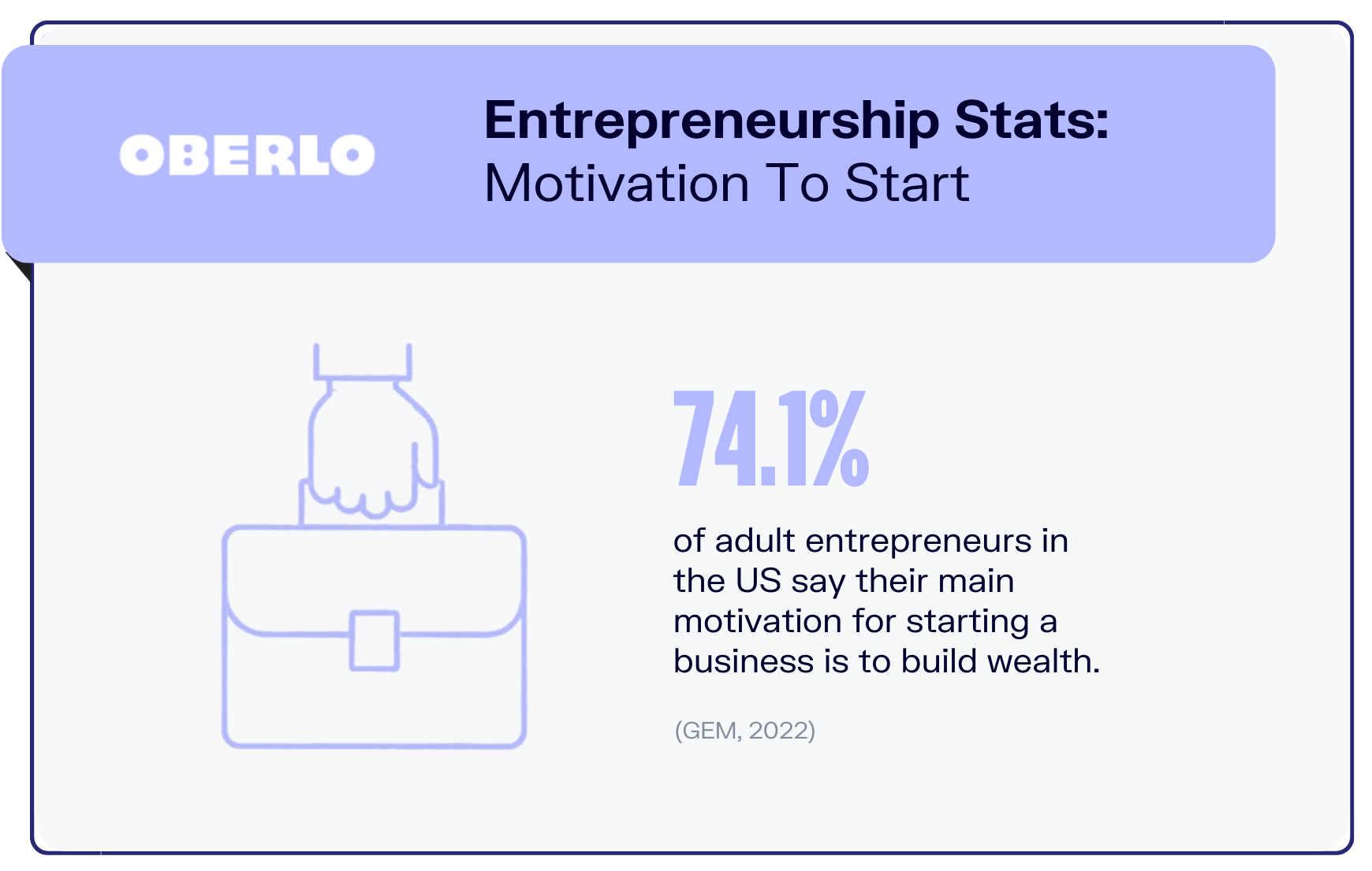
So what’s so great about being an entrepreneur? What are some factors that propel business owners to embark on such a venture?
As it turns out, wanting to build immense wealth is the main driver of entrepreneurship in the US. Nearly three out of every three (74.1 percent) adult entrepreneurs there list it as a principal motivation for starting a business (GEM, 2022). Interestingly, younger business owners seem to be more wealth-driven. 78.7 percent of US entrepreneurs aged 18 to 34 listed this as a motivation to start a business, compared to 70.6 percent of those aged 35 and above.
This is followed by the ability to influence change. 71.2 percent of US business owners say they believe entrepreneurship enables them to make a difference. The third most popular motivation to start a business is earning a living. 45.8 percent of US business owners say they were drawn to entrepreneurship because of this.
Family and tradition also impact people’s decisions to start businesses—41.5 percent of US entrepreneurs say they were motivated to do so to continue a family tradition.
8. Percentage of Entrepreneurs in America
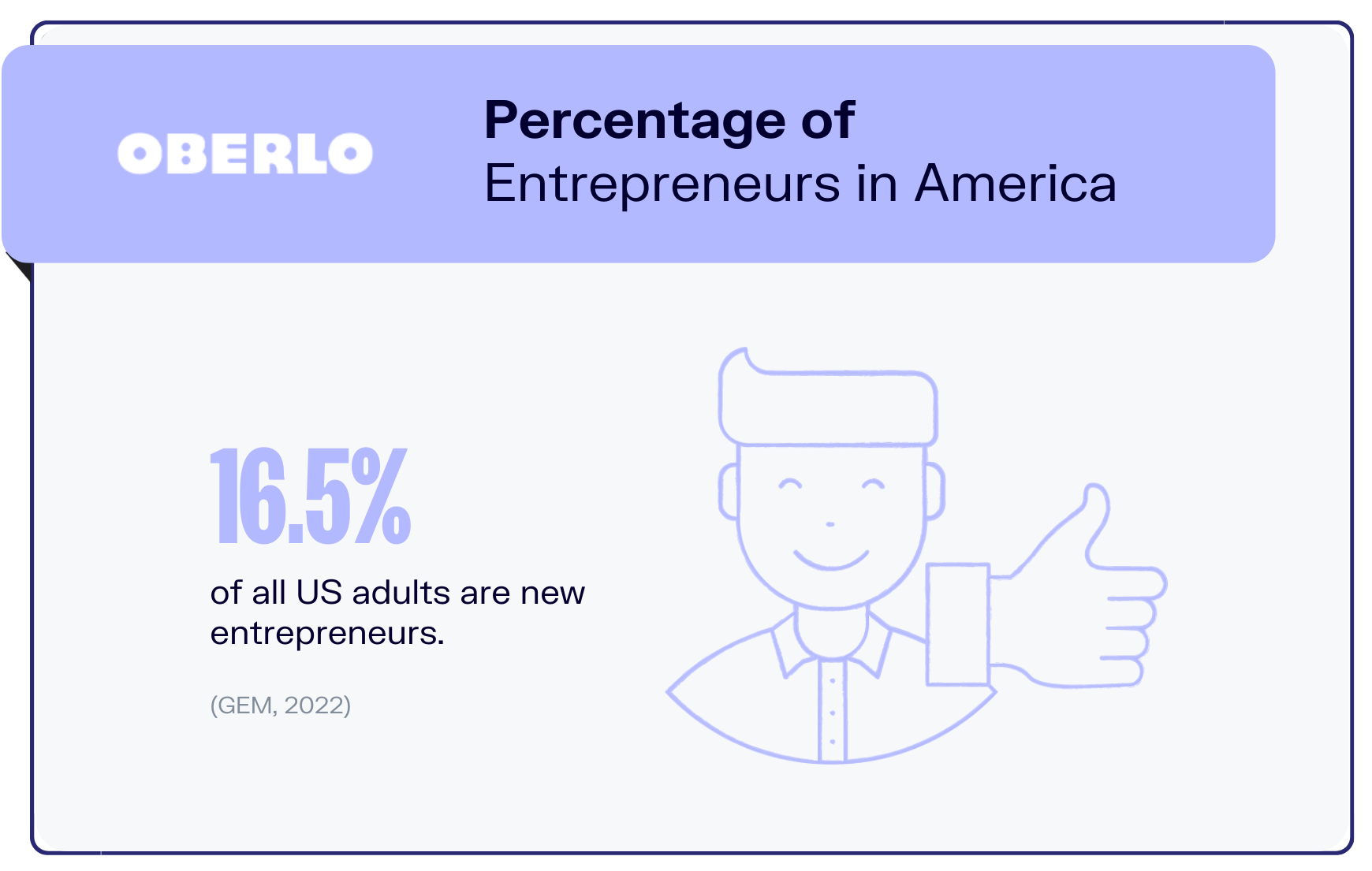
The advantages of entrepreneurship are clear. You get to be your own boss and you can choose when you want to work.
So, how many people in the US are choosing to be entrepreneurs over an employee? Recent entrepreneur stats show that 16.5 percent of all US adults are currently new entrepreneurs (GEM, 2022). In other words, around one out of every six adults is starting or running a new business, which is defined as an establishment that was started fewer than 42 months, or 3.5 years, ago.
Breaking this down, we see that the proportion of new adult male entrepreneurs is slightly higher than that of females. 17.8 percent of male US adults are running recently established businesses, compared to 15.2 percent of female US adults.
9. How Many Millionaires Are Self-Made?
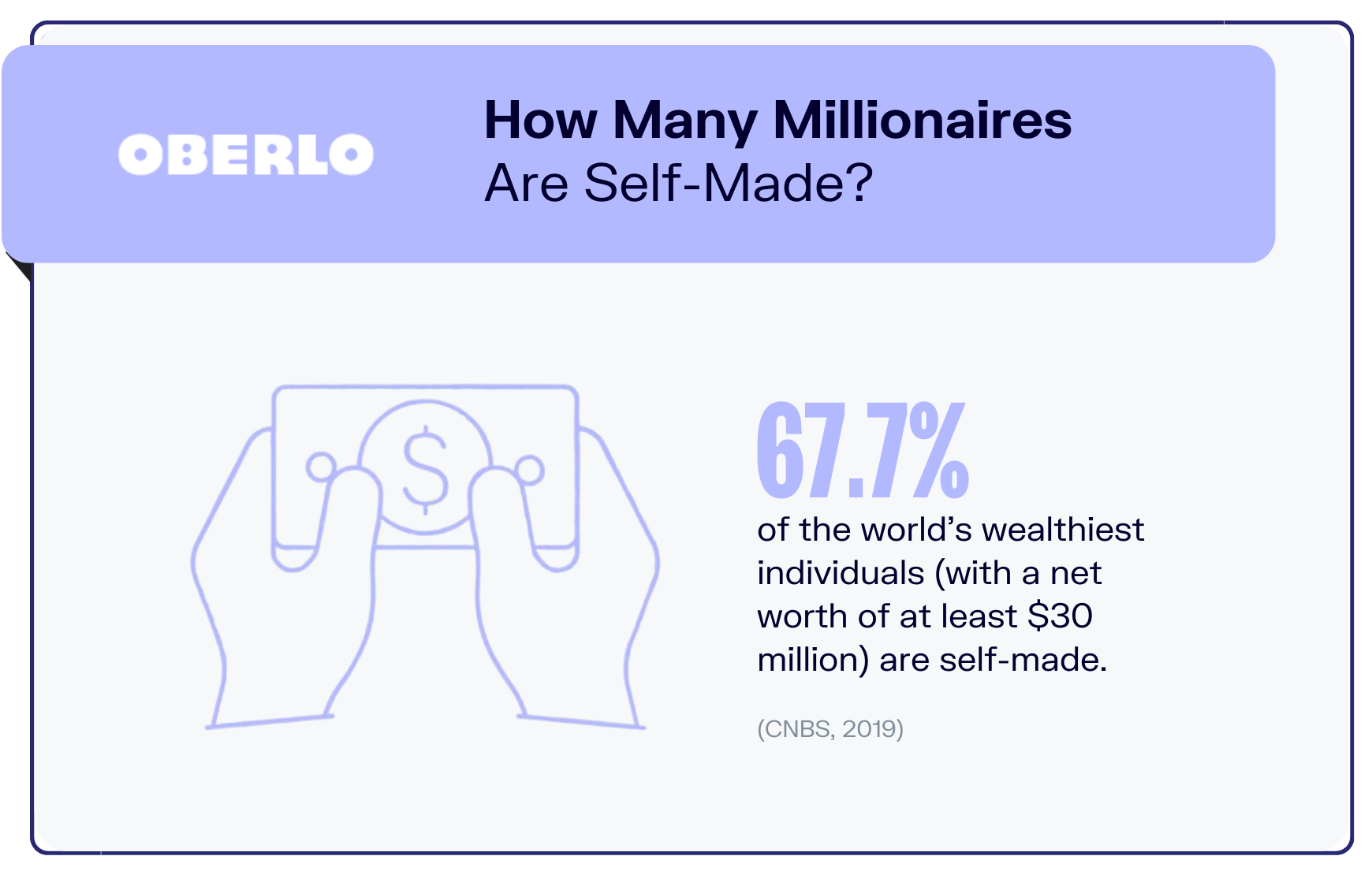
Will being an entrepreneur set you on a path to earning millions?
While that’s never a guarantee, here’s an entrepreneurship stat that may interest you if that’s something you’re going for: the majority of the world’s richest people are “self-made” (CNBC, 2019).
According to an analysis of wealthy individuals worth at least $30 million, of which there were 265,490 in the world in 2018, 67.7 percent of them accrued their wealth on their own. Around one in four (23.7 percent) depended both on themselves and their inheritance, and just 8.5 percent of them inherited all their wealth.
The percentage of these self-made millionaires has also been increasing year after year. In 2016, they made up 66.4 percent of all high-net-worth individuals. A year later, the number rose to 67.4 percent before further inching to 67.7 percent.
10. Family-Based Entrepreneurship
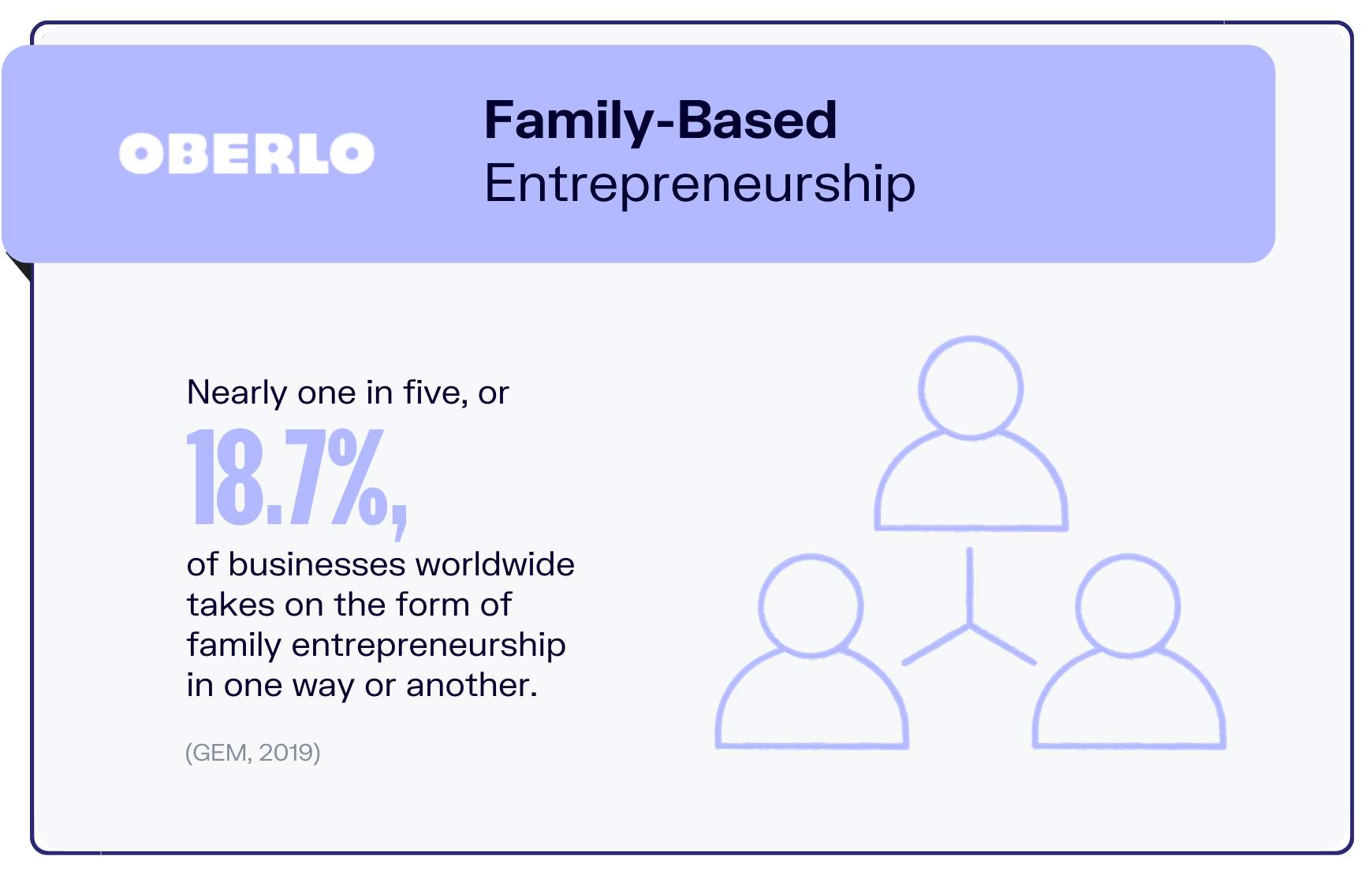
There are certainly advantages to starting a business with a partner.
After all, two heads are better than one. Plus, who better to embark on an entrepreneurial journey with than family?
According to the latest entrepreneurial statistics, nearly one in five (18.7 percent) business owners around the world are in it together with a family member (GEM, 2019).
Such an arrangement is particularly popular in countries like Colombia, the United Arab Emirates, and Uruguay, where family-based entrepreneurship makes up more than one-third of all businesses there.
Experts say that in these regions, particularly Latin America, family plays a vital role in kick-starting the venture. However, there may be cases where some of these businesses fail to progress with their original founding members. Conversely, some family members may not be involved in the starting stage and only come on board after.
Conclusion
There you have it—the top ten entrepreneur statistics you need to know in 2023.
Was there any stat that you found particularly surprising? And what did you make of these entrepreneurial statistics?
Whether you’re looking to become an entrepreneur in the US or anywhere else in the world, these facts about entrepreneurs should have given you a better idea of the exciting new world you’ll soon be joining.

Summary: Entrepreneur Statistics
Here’s a summary of the Entrepreneur statistics you need to know in 2023:
- There are 582 million entrepreneurs in the world (MARKINBLOG, 2020).
- Nearly 5.1 million new businesses were started in the US in 2022 (Census, 2023).
- As of 2020, there were 274 million female entrepreneurs worldwide (GEM, 2021).
- More than six in ten (63 percent) of US small businesses were profitable in 2020 (Guidant Financial, 2021).
- 72 percent of US businesses owned by African Americans are profitable (Guidant Financial, 2020).
- More than half of the new businesses started in the US over the past decade are minority-owned (SBC, 2020).
- 74.1 percent of adult entrepreneurs in the US say their main motivation for starting a business is to build wealth (GEM, 2022).
- 16.5 percent of all US adults are entrepreneurs (GEM, 2022).
- 67.7 percent of the world’s wealthiest individuals (with a net worth of at least $30 million) are self-made (CNBC, 2019).
- Nearly one in five (18.7 percent) of businesses worldwide takes on the form of family entrepreneurship in one way or another (GEM, 2019).



Want to Learn More?
- Design your dream life [Course]
- Best Free Logo Maker: 17+ Tools and Apps for Logo Design
- Aspiring Entrepreneurs: Read This if You Feel Like You’re Not Good Enough
- Social Entrepreneurship: 10 Ways to Make a Difference Through Business
Is there anything else you’d like to know about Entrepreneur statistics and wish was included in this article? Let us know in the comments below!
